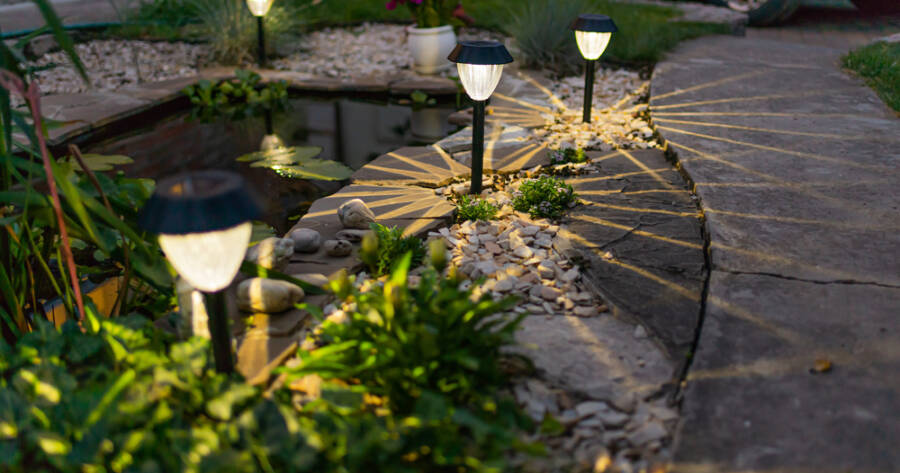In the European Union, where sustainability and energy efficiency are increasingly prioritized, off-grid garden lighting solutions have gained significant traction. Homeowners and urban gardeners are turning to solar and wind-powered lighting systems to illuminate their outdoor spaces without relying on the traditional power grid. Key technologies not only reduce electricity costs but also align with eco-friendly practices, making them an attractive option for those looking to enhance their gardens responsibly.
Harnessing Solar Power for Garden Illumination
Solar-powered garden lights have become a staple in many European households, offering a blend of functionality and aesthetic appeal. These lights operate by converting sunlight into electricity during the day, which is then stored in batteries for use at night. The simplicity of installation—often requiring no wiring—makes them accessible for a wide range of users.
Moreover, advancements in solar technology have led to improved battery life and brighter illumination, ensuring that gardens remain well-lit throughout the evening hours. Brands like Luminize offer a variety of solar lighting options suitable for different garden styles and sizes.
Integrating Wind Energy into Garden Lighting
While solar energy is abundant during sunny days, wind energy serves as a complementary power source, especially in regions with less sunlight. Wind-powered garden lights utilize small turbines to generate electricity, which can be stored in batteries similar to solar systems.
This integration ensures a more consistent energy supply, particularly during overcast periods. Companies like Marlec have developed hybrid systems that combine both solar and wind energy to provide reliable off-grid lighting solutions.
Practical Applications and Benefits
Off-grid garden lighting systems offer several practical benefits:
- Energy independence: By relying on renewable energy sources, homeowners can reduce their dependence on the traditional power grid, leading to potential cost savings.
- Environmental impact: Utilizing solar and wind energy reduces carbon emissions, contributing to a more sustainable environment.
- Ease of installation: Most off-grid lighting systems are designed for easy installation, often requiring minimal tools and no professional assistance.
- Versatility: These systems can be used in various settings, from urban balconies to rural gardens, providing flexibility in application.
Moreover, the aesthetic appeal of modern designs enhances the visual charm of outdoor spaces, making them more inviting during evening hours.
Considerations for Implementation
Before installing off-grid garden lighting, it’s essential to assess the specific needs and conditions of the outdoor space:
- Sunlight and wind exposure: Evaluate the amount of sunlight and wind the area receives to determine the most effective energy source.
- Lighting requirements: Consider the desired brightness and coverage area to select appropriate lighting fixtures.
- Budget: While off-grid systems can lead to long-term savings, initial investment costs vary depending on the complexity and quality of the system.
- Maintenance: Regular maintenance, such as cleaning solar panels and checking battery health, ensures optimal performance.
By carefully planning and selecting suitable products, homeowners can maximize the benefits of off-grid garden lighting systems.
Embracing Sustainable Outdoor Living
The adoption of off-grid garden lighting solutions reflects a broader commitment to sustainable living practices within the European Union. By harnessing renewable energy sources like solar and wind, homeowners not only reduce their environmental footprint but also enjoy the practical benefits of energy independence and cost savings.
As technology continues to advance, these systems are becoming more efficient, affordable, and accessible, making them a viable option for a wide range of outdoor spaces. Embracing these innovations allows individuals to create beautifully illuminated gardens that align with eco-conscious values.

